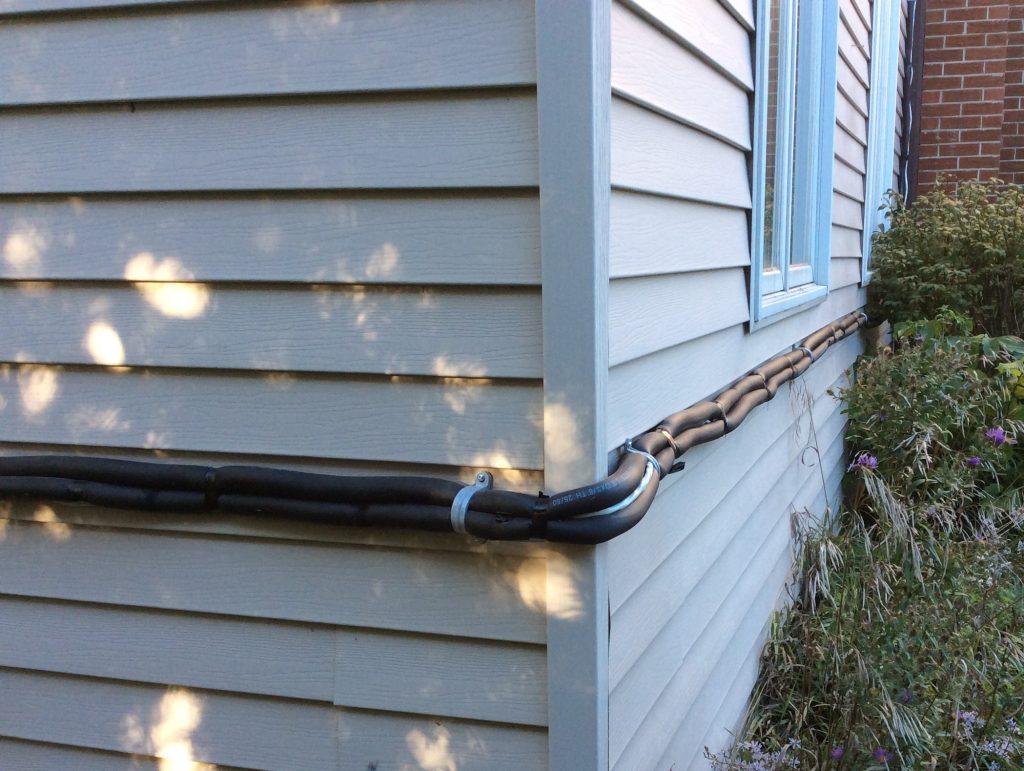
The Duct Free Zone: Do Mini Splits Require Design?
March 29, 2022 | By Gerry Wagner
Installers must first be system designers to insure a system meets the needs and expectations of the homeowner.
 Homeowners seem to have a perception of mini splits which over simplify their application and installation. Truth be told, mini splits often find themselves bunched together with window units and free-standing portable AC units in the collective mindset of the buying public.
Homeowners seem to have a perception of mini splits which over simplify their application and installation. Truth be told, mini splits often find themselves bunched together with window units and free-standing portable AC units in the collective mindset of the buying public.
This perception is unfortunate, inaccurate and frankly, not healthy for HVAC industry.
I have two curriculums that I conduct for the inverter mini split product line I represent in Canada, one being Sizing, Design & Installation and the other, Troubleshooting.
Sizing, Design & Installation, yeah, you heard me “DESIGN.”
After a sale, installation is not simply slapping an evaporator on a wall and attaching it to an outdoor unit in the closest possible proximity. Installers must first be system designers to insure a system meets the needs and expectations of the homeowner and at the same time performs to its fullest potential.
A professional installation starts with a proper heat gain/heat loss calculation, in Canada the industry standard being the CSA F280‐12 Standard for residential applications or the Air Conditioning Contractors of America (ACCA) Manual J.
A professional installation then continues beyond the sizing calculation with a proper system design.
Where is the best placement for the evaporator? The outdoor unit? How to best run the lineset, condensate drain tubing and power/communication cable between the indoor and outdoor unit? These concerns are just that, concerns that must be addressed BEFORE holes are drilled through walls.
I always promote the evaporator be placed on an outside wall for no other reason than ease of installation. (This regular “Duct Free Zone” column of mine is directed at the HVAC/R trade, NOT to homeowners, so I’m speaking to my trade brothers and sisters here.) It is in our best interest to install the wall-mounted mini split indoor unit on an outside wall for ease of lineset, condensate drain and electrical cable run.
Nine times out of 10 with single-zone systems your outdoor unit will be just on the other side of the outside wall where you are installing the evaporator, and that makes our job as installers a whole lot easier, and there is nothing wrong with trying to make your job easier!
Also, nine times out of 10 I’m going to centre the evaporator on the outside wall onto which it is being installed for no other reason than aesthetics—it looks better when it is symmetrical.
The 10th time is when I’m trying to effect more than one room with a single evaporator, and this is a very common and very acceptable design alternative. There are any number of reasons why I might use one evaporator to service more than one room: open floor plan, difficulty in installing a second evaporator and the most common reason, simple economics!
In my Sizing, Design & Installation curriculum, I speak to the need to be able to accommodate all of our customers, not just the ones with an excess of disposable income, but also those who are on a tight budget. Utilizing one indoor unit to service more than one room, where applicable, can be a significant cost savings, and that makes sense for everyone!
I don’t want to imply that mounting the evaporator on an interior wall is a no, no, or in some way a poor design. Clearly there are applications where an interior wall is the best location, but when we do this additional accommodations must be made for condensate removal (pump), not to mention lineset and electrical cable routing.
I always stress that as designers and installers we must make sure the homeowner is onboard with our design and understands it. The homeowner can’t do something that impedes that flow of air after you leave, compromising your system design (i.e. they can’t put a bookcase in front of the evaporator if you are trying to have the throw of air from that single indoor unit effect more than one room).
I always make a point to mention in my training that I’m not there to disparage conventional ducted “unitary” type systems, ducted systems should not, and will not disappear. Mini splits are simply an alternative to the conventional ducted system. Sometimes a better alternative, but not always!
Those of us who have designed and installed ducted, unitary type systems, from scratch whether it be new construction or renovation, wouldn’t think of doing so without a proper system design and mini splits should be no different!
Let’s be honest here, the primary reason mini splits have taken this long to take hold in Canada, when the rest of the planet went ductless decades ago, is the mini split evaporator. The advent of alternatives to the “high wall mount” evaporator, like ceiling cassettes and ducted evaporators, create even greater emphasis for the need for proper mini split system design. These evaporators, though more discrete and aesthetically more “familiar” in appearance, do have their own unique installation requirements.
Harry Eklof, founder of Harry Eklof & Associates, one of the premier manufacturer’s representative agencies in our industry and one of my most valued mentors both in life and in business had an expression: “perception is reality.” Harry recognized how perception, no matter how inaccurate it may be, is reality to those who don’t know better.
We as HVAC/R professionals must understand that no matter what the perception the homeowner has of inverter mini splits, we know better and must give mini splits the same respect and consideration that ducted, unitary systems have enjoyed for generations. <>

 Gerry Wagner is the vice president of business development for Bathica. He has 41 years in the HVAC/R industry working in manufacturing, contracting and training. He can be reached at
Gerry Wagner is the vice president of business development for Bathica. He has 41 years in the HVAC/R industry working in manufacturing, contracting and training. He can be reached at 


